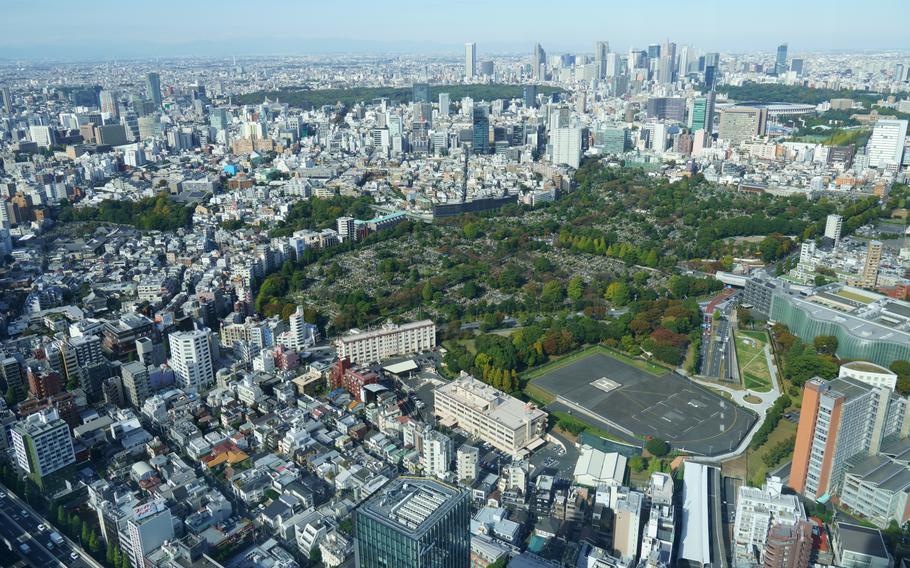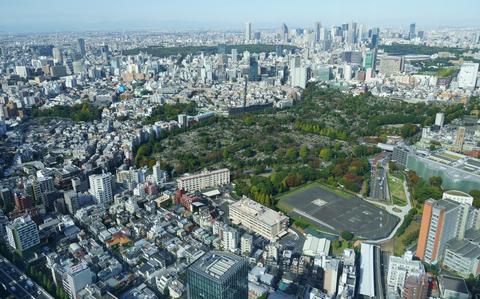
The Akasaka Press Center, Hardy Barracks and a U.S. Army helipad are seen from the Roppongi Hills Mori Tower observation deck in Tokyo on Nov. 8, 2024. (Akifumi Ishikawa/Stars and Stripes)
TOKYO — Local officials objected to plans by U.S. Forces Japan to add a handful of new personnel to a small military compound in central Tokyo as a “perpetuation” of the U.S. military presence.
USFJ assigned a new liaison group established in March to the Akasaka Press Center, the headquarters of Stars and Stripes 2½ miles from Camp Ichigaya, the headquarters in Tokyo of Japan’s Ministry of Defense, according to a ministry statement Thursday.
USFJ has not acknowledged the group’s assignment to the secure compound in Roppongi, a district in the Minato city section of Tokyo. The command did not respond to emailed requests for comment Friday.
Minato Mayor Ai Seike and Takaya Suzuki, chairman of the city assembly, complained Thursday in a letter to the defense ministry about the noise and accident risk related to the press center’s heliport and asked that the press center be closed. In addition to the press building and heliport, the compound includes Hardy Barracks, an Army lodging facility.
“We are deeply concerned that the addition of new functions to the Akasaka Press Center will lead to perpetuation of the base,” the pair wrote.
However, a statement on the Minato city website said it learned from the defense ministry that no significant changes are expected at the compound.
“The U.S. side has explained that there are no plans for new construction or large-scale renovation of the facilities and there are no plans to deploy new assets, such as aircraft, that would affect the local area as of now, and there will be no impacts to the area, such as noise,” the statement posted Thursday reads.
Adding personnel to the press center is part of a restructuring of USFJ, headquartered at Yokota Air Base in western Tokyo, into a “warfighting” joint force headquarters.
U.S. Secretary of Defense Pete Hegseth, during a March 30 visit to Tokyo, said the restructuring is in its first phase.
Posting a liaison group at the Akasaka Press Center provides USFJ a closer physical presence to the defense ministry. The USFJ restructuring is motivated in part by a need to integrate a U.S. joint force operational command with its counterpart, the Japan Joint Operations Command, established March 24.
The defense ministry provided details of USFJ’s reorganization to Minato city on March 31, an official from the city office on U.S. military base affairs said by phone Friday.
A U.S.-Japan working group will discuss further details surrounding the USFJ plan at Akasaka Press Center, according to the city statement on its website.
The Tokyo Metropolitan Government was also told by the defense ministry that no new facilities, large-scale renovations or significant increases in personnel at the press center are expected, according to a March 31 statement on the metro government website.
However, the metro government prefers the U.S. close the press center, since it impedes urban development and impacts surrounding residents, according to the online statement.


AloJapan.com